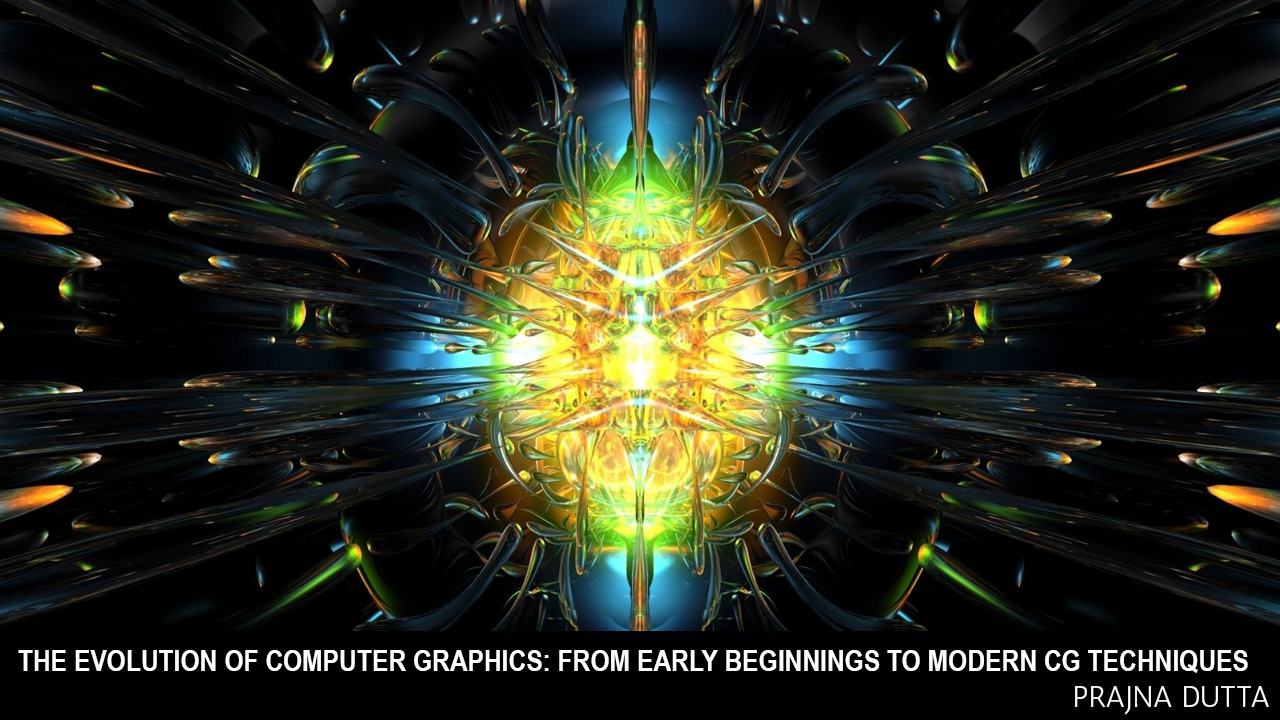Introduction:
Computer graphics (CG) has revolutionized the way we create, visualize, and interact with digital content. From its humble beginnings in the 1960s to the sophisticated techniques used today, CG has undergone a remarkable evolution. This article explores the history and development of computer graphics, highlighting key milestones and advancements that have shaped the field.
1. The Birth of Computer Graphics:
The roots of computer graphics can be traced back to the early days of computing. In the 1960s, pioneers such as Ivan Sutherland and David Evans at MIT developed the first computer-based drawing systems. These systems utilized cathode-ray tube (CRT) displays and allowed users to create simple line drawings interactively. The groundbreaking Sketchpad system, created by Sutherland in 1963, is often considered the birth of computer graphics.
2. Advancements in 3D Graphics:
During the 1970s and 1980s, significant advancements were made in 3D computer graphics. Researchers and engineers began exploring techniques to represent three-dimensional objects on two-dimensional screens. The introduction of the first commercial 3D graphics workstation, the Evans & Sutherland Picture System, in 1972, marked a major milestone in the field.
Another critical development was the emergence of rendering algorithms such as the Z-buffer algorithm and the ray tracing technique. These algorithms improved the realism of computer-generated images by simulating the behavior of light and shadows.
3. Rise of Computer Animation:
The 1980s witnessed the rise of computer animation, thanks to advancements in rendering and modeling techniques. The release of films like "Tron" (1982) and "The Last Starfighter" (1984) showcased the potential of computer-generated imagery (CGI) in the entertainment industry. Pixar Animation Studios, founded in 1986, played a crucial role in the popularization of computer-animated movies with groundbreaking films like "Toy Story" (1995).
4. Real-Time Graphics and Video Games:
The 1990s brought about a new era of real-time computer graphics with the advent of powerful graphics processing units (GPUs). This enabled the development of visually stunning video games with immersive 3D environments. The introduction of popular game consoles like the Sony PlayStation and the Sega Saturn pushed the boundaries of real-time graphics and inspired further innovation in the field.
5. Photorealism and Visual Effects:
In recent years, the pursuit of photorealistic computer graphics and visual effects has been a driving force in the industry. Advances in rendering algorithms, global illumination techniques, and physically based materials have brought unprecedented levels of realism to CG images. Films like "Avatar" (2009) and "The Jungle Book" (2016) showcased the seamless integration of computer-generated characters and environments with live-action footage.
6. Virtual Reality and Augmented Reality:
The development of virtual reality (VR) and augmented reality (AR) technologies has opened up new possibilities for computer graphics. VR immerses users in fully virtual environments, while AR overlays digital content onto the real world. Both technologies rely heavily on computer graphics to create convincing and interactive virtual experiences, whether it's exploring virtual worlds or enhancing real-world surroundings with digital information.
Conclusion:
The history and development of computer graphics have been marked by continuous innovation and technological advancements. From the early days of basic line drawings to the sophisticated photorealistic imagery of today, CG has evolved into a multidisciplinary field that encompasses computer science, mathematics, art, and design. The progress made in hardware, software, and algorithms has propelled computer graphics into new frontiers.
Looking ahead, the future of computer graphics holds even more exciting possibilities. Advancements in real-time rendering, machine learning, and artificial intelligence are likely to push the boundaries of what can be achieved in terms of realism, interactivity, and immersion. As technology continues to advance, we can expect to see more seamless integration of computer graphics with our daily lives, whether through virtual reality, augmented reality, or mixed reality experiences.
Moreover, computer graphics is not limited to entertainment and gaming industries alone. It finds applications in diverse fields such as architecture, engineering, medicine, scientific visualization, advertising, and even virtual prototyping. From architectural visualizations to medical simulations, computer graphics has become an integral part of various industries, enhancing communication, problem-solving, and creativity.
The history and development of computer graphics have paved the way for a digital revolution, transforming the way we create, communicate, and experience visual content. As technology continues to evolve, computer graphics will undoubtedly continue to play a crucial role in shaping our digital world, enabling us to explore new realms of imagination and innovation.
In conclusion, the journey of computer graphics from its early beginnings to the present day signifies the remarkable progress made in the field. What started as simple line drawings on CRT displays has evolved into immersive virtual experiences and photorealistic imagery. As we look ahead, the future of computer graphics promises even greater advancements, unlocking new realms of creativity and pushing the boundaries of what is possible in the digital realm.

Comments